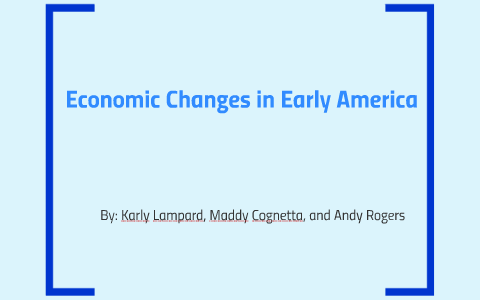As I sat watching the currency exchange rates fluctuate wildly on my screen, I couldn’t help but wonder what forces were at play behind these seemingly random numbers. It dawned on me that the vast and ever-shifting world of macroeconomics held the key to understanding the enigmatic dance of the foreign exchange market, or forex.

Image: prezi.com
Enter the realm of macroeconomic changes—broad economic factors that influence the global economy as a whole, from interest rates and inflation to GDP and unemployment. These seemingly distant shifts can have a profound impact on currency values, creating opportunities and risks for traders alike.
Understanding the Macroeconomic Landscape
Any discussion of macroeconomic changes inevitably must begin with interest rates—the cost of borrowing money. Interest rates set by central banks influence the flow of investments and, in turn, the demand for currencies. When interest rates rise in a particular country, foreign investors are drawn to its bonds, seeking higher returns. This increased demand strengthens the currency.
Inflation, the rate at which prices rise, is another crucial factor. High inflation erodes the purchasing power of a currency, making it less attractive to hold. Conversely, low inflation can make a currency more appealing as a store of value.
Navigating the Impact of Macroeconomic Changes
Given the ripple effects of macroeconomics, Forex traders must constantly monitor these shifts to stay ahead. Here are some key strategies to consider:
- Follow economic news and data releases: Central bank announcements, GDP reports, and inflation figures can provide timely insights into macroeconomic trends.
- Analyze historical data: By studying past market reactions to macroeconomic changes, traders can gain valuable perspective on potential future scenarios.
- Consider geopolitical events: Political instability, trade wars, and natural disasters can disrupt economic activity, impacting currency values.
Beyond these fundamentals, incorporating expert advice can help traders navigate the complexities of the forex market. For instance, currency experts often recommend diversifying into multiple currencies to mitigate risks. Additionally, traders can consider hedging their positions by using options or futures contracts.
FAQs on Macroeconomic Changes and Forex
Q: How do interest rate changes affect currency values?
A: Higher interest rates in a specific country increase the demand for its currency, leading to appreciation.
Q: Why is it important to monitor inflation when forex trading?
A: High inflation weakens a currency’s purchasing power, while low inflation enhances its attractiveness as a store of value.
Q: What is the role of central banks in macroeconomic management?
A: Central banks set interest rates and implement monetary policies to influence economic activity and stabilize currencies.

Image: www.youtube.com
Macro Ecocomic Changes Effect On Forex Market
Conclusion
In the dynamic world of forex trading, macroeconomic changes are the invisible force that sculpts currency values. By understanding the interplay between interest rates, inflation, and other economic factors, traders can make informed decisions and reap the rewards of this volatile market. Whether you’re a seasoned pro or a newcomer to forex, embracing the power of macroeconomic insights will sharpen your edge and enhance your trading potential.
Tell us in the comments below—how do you incorporate macroeconomic changes into your forex trading strategy?






